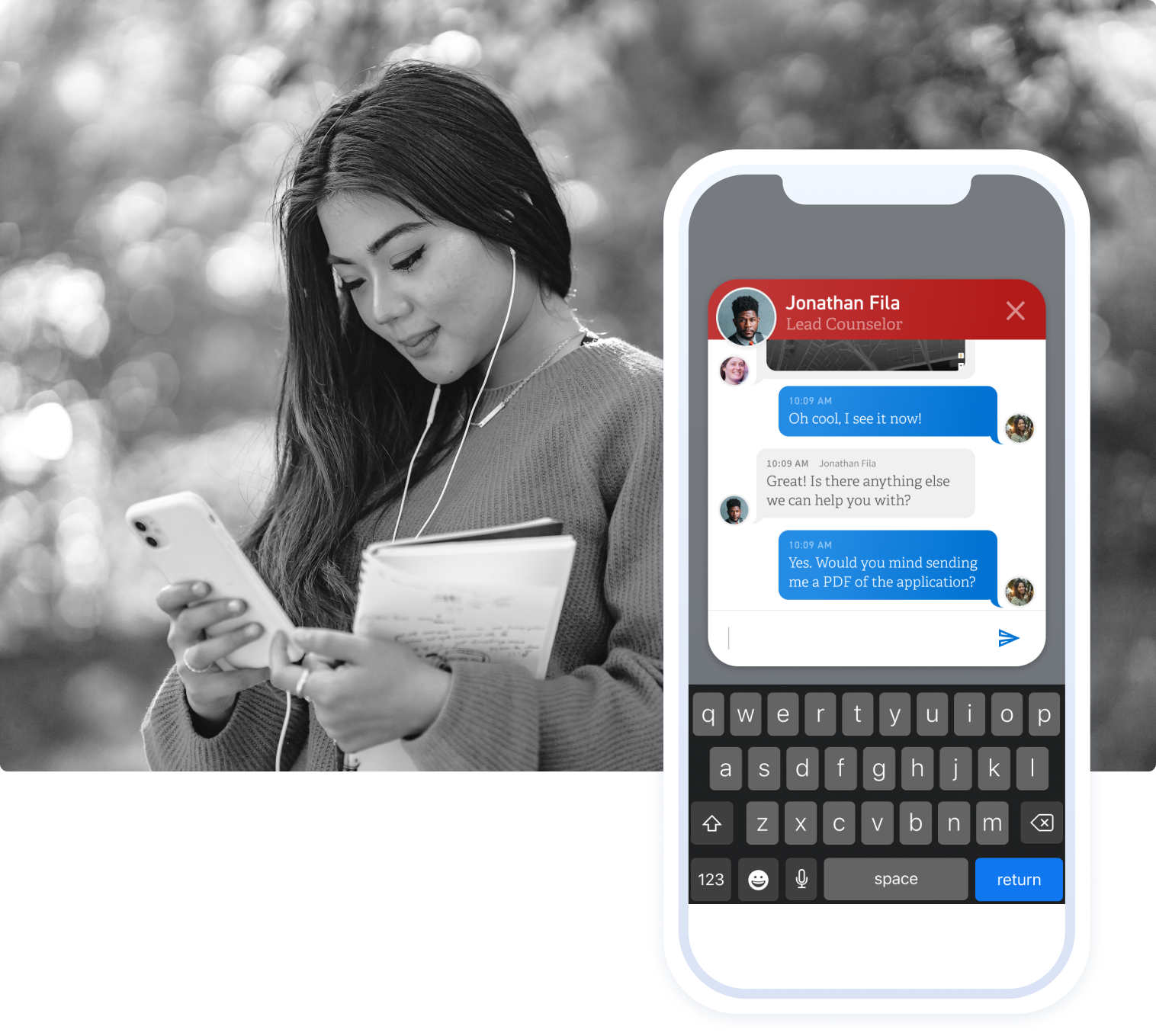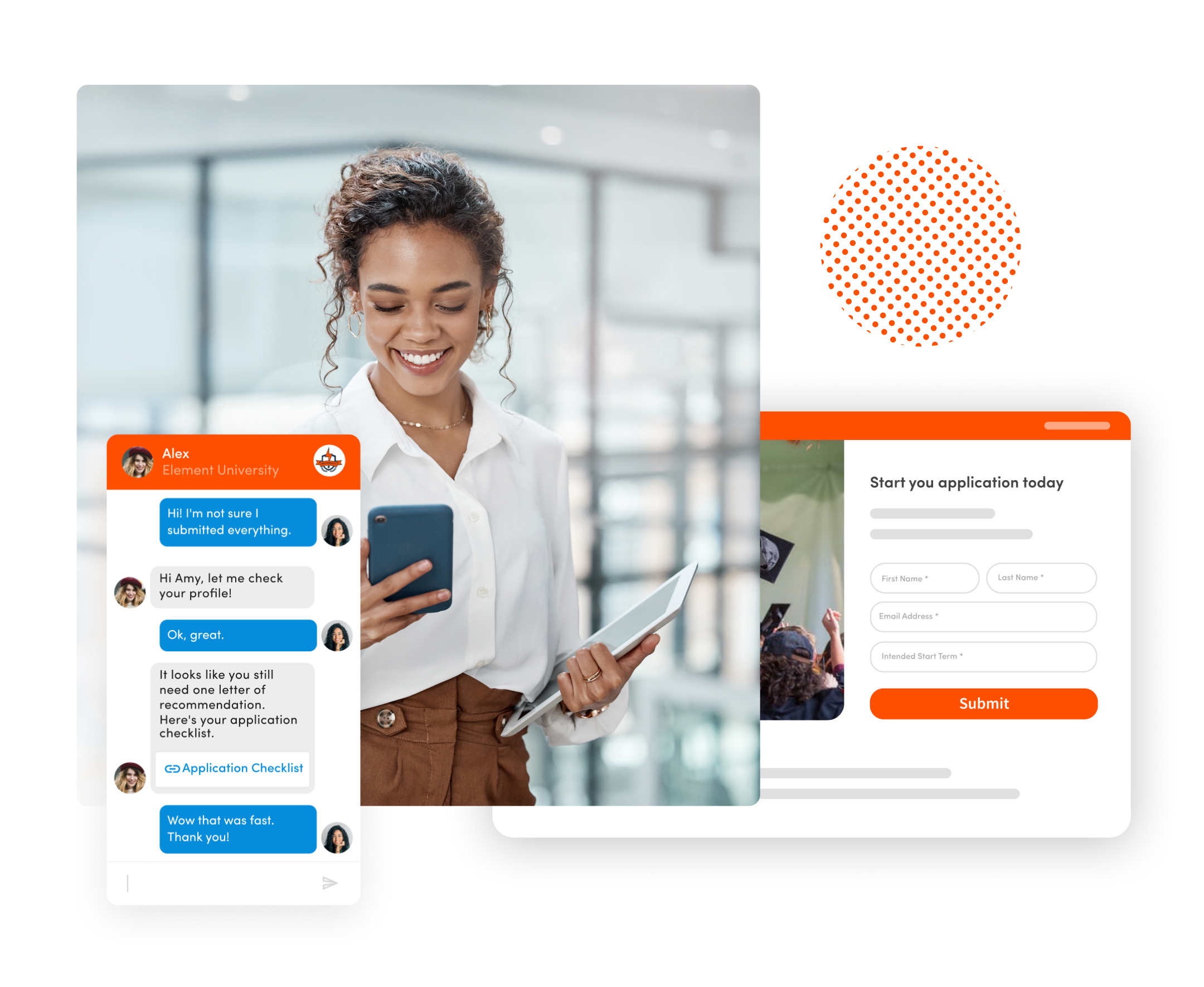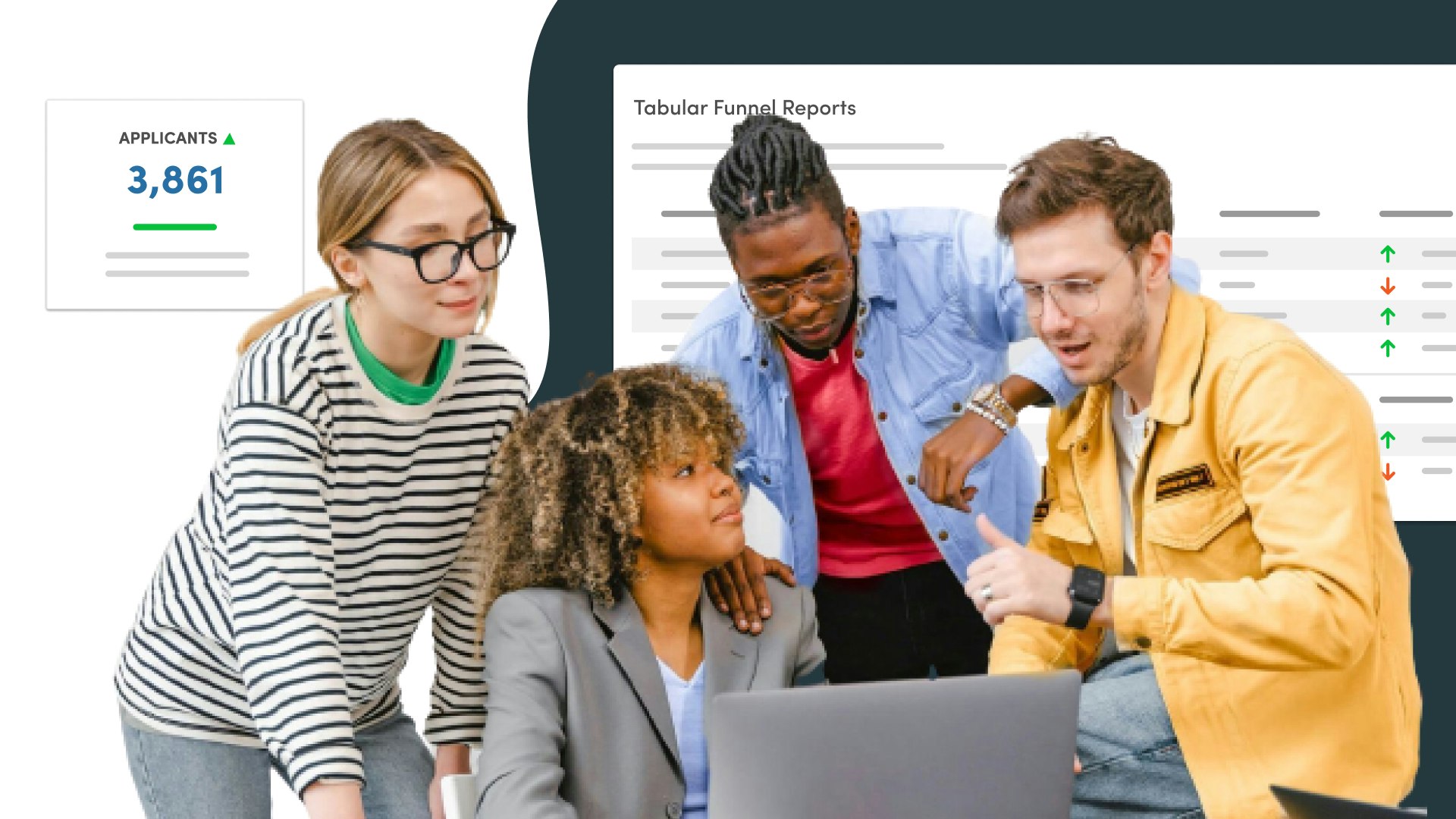How to Implement Chatbots in Higher Education Marketing
by Sirley Carballo · Updated Mar 28, 2023
Chatbots Deliver Personalization—Here’s How to Implement Them in Higher Education Digital Marketing
The world of digital communication is fast-moving and constant, which means that schools and businesses alike must adapt to new trends that consumers expect.
Keeping up with demands often requires innovative experiences that put prospective students first. In a higher education context, this means helping college students find answers within several separate departments, including admissions, academics, and financial aid.
Chatbots are a helpful tool that businesses are deploying to connect with prospects and followers in online environments. When website visitors land on chatbot technology, they can quickly submit questions or get redirected to the appropriate office.
At colleges and universities, chatbots can reduce frustration that students and families feel when trying to obtain answers to important questions.
In this post, we’ll explore what higher education experts are calling one of the most popular new trends in education communication. You’ll also learn how to search for the right chatbot software and how your school community can reap the benefits.

What are Chatbots?
A chatbot is a specific type of computer program or software that mimics real human communication. They are programmed to be predictive in nature, often using conversational artificial intelligence (AI) and natural language processing to respond to real-time user inquiries, questions, and comments.
Chatbot Software for the Student Journey
Chatbot software is a popular choice for many different types of organizations that want to expand support to customers (or in this case, students) outside of traditional business hours. Since chatbots are “always online,” they can bridge communication gaps that may otherwise be missed when a human contact isn’t available. Modern chatbot software is also secure and user-friendly, and it can often provide in-depth analytics about the type of person that sends messages or makes new requests.
What is Conversational Artificial Intelligence (AI)?
Conversational artificial intelligence is the broader technology associated with digital tools like chatbots. Essentially, conversational AI recreates human-to-human communication or speech. The biggest difference, of course, is that conversational AI takes place through computer programs.
Other examples of conversational AI can include virtual agents or live ticketing systems that “speak” back to the person submitting the request. As higher education seeks to develop advanced digital processes, it’s expected that these tools will become standard.
4 Benefits of Chatbots for a Digital Marketing Strategy
It’s understandable (and even expected) that some individuals might feel apprehensive when incorporating AI into higher education institutions. But reaching a new generation of students within a well-defined target audience means adapting, growing, and evolving.
Future students already have experience interacting with chatbots on business, social, and eCommerce websites. As a result of their familiarity with chatbot tools, they might expect or crave a similar experience when going through the student recruitment or student enrollment processes.
But if artificial intelligence feels intimidating at first glance, don’t abandon it too soon. Below are some of the most popular advantages and benefits that higher education stands to gain by implementing chatbots as a marketing tactic.
Perk 1: Gather More Student Data and Insights
In most instances, chatbots are placed directly on a main website or homepage. Pre-programing allows the chatbot to redirect that web traffic to specific departments or pages through typical contact methods. But believe it or not, that’s not all that chatbots can do.
With an installed chatbot program or platform, higher education marketers can glean more information about the people and students that are visiting the site. Key takeaways include:
- Data about the number of prospective students passing through a site
- Level of interest (based on answers to certain questions)
- What actions they most want or need to accomplish next
- How long it takes someone to complete the next steps in the enrollment lifecycle
- What factors lead a prospect to abandon their search
These insights can help inform and shape the broader marketing strategy. For example, if the chatbot begins to recognize that most students get hung up or confused by the financial check-in process, school leadership may consider how to communicate steps more clearly.

Get a Demo of BoltBot
Powered by OpenAI, BoltBot works tirelessly around the clock answering inbound questions on SMS and web messenger channels, so your institution can stay responsive 24/7.
See it in Action
Perk 2: Lower Incoming Call Volumes
Prospective and current students often need quick answers to common questions. These inquiries might involve different departments (admissions, financial aid, or the registrar) and are often simple to answer. Unfortunately, getting in touch with the right person who can assist often takes too much time and effort.
Additionally, incoming call numbers can drastically increase, particularly at certain times of the academic year. This can create bottlenecks for departments that regularly field student questions prior to enrollment.
The bright side is that chatbots can reduce this time and effort—both for the student and for on-campus personnel. By providing quick and easy answers based on the student’s information, chatbots can generate reliable answers without needing to connect to a phone call. In this scenario, everyone benefits from a streamlined, automatic process.
Perk 3: Nurture Your School’s Brand Messaging
The rise in chatbot technology has also introduced notable improvements in how chatbots sound and relate to human users. Even though a chatbot is an automated AI tool, it doesn’t have to come across exactly like a robot.
Colleges and universities are discovering great success in programming and building chatbots to communicate in friendly and personable ways. These on-brand interactions provide reassurance for users who crave the same type of interaction they’d experience with another individual.
When it comes to handling marketing expectations, a chatbot can be an extension of your school’s in-person brand and voice. Many colleges and universities choose to incorporate a school mascot or other personalized feature to make the bot more relatable and entertaining.
Perk 4: Provide Access to Diversity
Chatbots often reference playbooks or scripts, which can be adjusted and changed by marketing personnel. These defined responses provide a starting point for the chatbot, while also allowing the artificial intelligence technology to gather more information and continually meet new expectations or demands.
One of the more creative ways that this happens is through recognizing the diversity of the student body, both in speech and in terms of personal preferences. A Salesforce.org initiative provided an opportunity for students to create and design new higher-ed chatbots. One of the winning designs, a chatbot called “Husky Helper” (from the University of Washington) was designed specifically to think, act, and respond like a student.
The Husky Helper bot offered students suggestions on where to find the closest ethnic food, how to receive tailored mental healthcare or academic support, and even how to converse about broader career or personal goals.
As a direct result of this experiment, it’s now easier to understand how chatbots can be a bridge to understanding students’ diverse interests, needs, and pathways.
How to Choose the Right Chatbot Platform
The rise in chatbot technology has introduced an impressive number of choices on the market. Although choosing a new software might come down to simple factors like budget and implementation, there are a few additional things to consider before picking a chatbot.
The questions below can help your college or university plan to incorporate your own chatbots as a marketing tool in the future.
- What basic abilities does the chatbot platform need to have?
- Should the chatbot be dynamic and able to create responses in its own words, or is it intended to produce simple answers until an actual human can intervene?
- Does the technology have the ability to share conversational data between departments as needed?
- What points of frustration or friction in the user experience should the chatbot solve?
- Which key players will be responsible for installing, monitoring, and improving the chatbot as a service?
- What is the ultimate goal of the chatbot experience for staff, students, and families?
Element451's AI-Powered BoltBot Helps Increase Engagement and Enrollment
Element451’s own intelligent chatbot,BoltBot, can increase student engagement and ultimately drive enrollment.
BoltBot provides a highly interactive and engaging platform for students with all types of questions. The chatbot provides instant responses to student inquiries and is available 24/7, making it more convenient for students to get the necessary information. Plus, it’s embeddable on any institution's webpage.
This intelligent bot is not limited to keyword matching - it understands the context and meaning behind every question and provides accurate answers based on that. Plus, it gets smarter as you feed it with content and knowledge specific to your institution.
Element451 offers an optional universal knowledge base to jump-start BoltBot, which helps you implement the bot right away and ensure you have institution-specific knowledge in its database. No additional setup is needed, so schools can start using BoltBot right away.
Today’s students want and expect answers fast. With BoltBot, students can get answers to their questions about admissions, financial aid, course registration, and other school-related issues in real time.
This enhanced engagement and availability leads to increased satisfaction among students, as well as higher retention rates.

Guide to Choosing a CRM for Higher Ed
Learn what to look for when choosing higher education marketing and enrollment software.
Get the Guide
Personalize Your Higher Education Marketing Strategy
Whether you currently use chatbots, are interested in leveraging them, or have yet to decide, the important takeaway is that your higher ed marketing efforts truly matter, both now and in the future.
As a college or university, engaging with students in relevant ways means staying in the loop about important trends, innovations, and even technology.
Chatbots offer an enhanced ability to personalize your marketing to reach a greater number of students and families easily. By removing roadblocks (such as time delays), you can better connect with students at the right time. This allows you to capitalize on possible interest and encourage in-the-moment actions that can potentially lead to more enrollments.
Book your Element451 demo now to learn how personalized student engagement tools can allow your university to grow by reaching the next generation of students.

About Element451
Boost enrollment, improve engagement, and support students with an AI workforce built for higher ed. Element451 makes personalization scalable and success repeatable.
Categories
New Blog Posts

The Definitive Guide
AI in Higher Education
Bridge the gap between the latest tech advancements and your institution's success.
Useful Links
Related Articles

Talk With Us
Element451 is the only AI Workforce Platform for higher education. Our friendly experts are here to help you explore how Element451 can improve outcomes for your school.
Get a Demo








